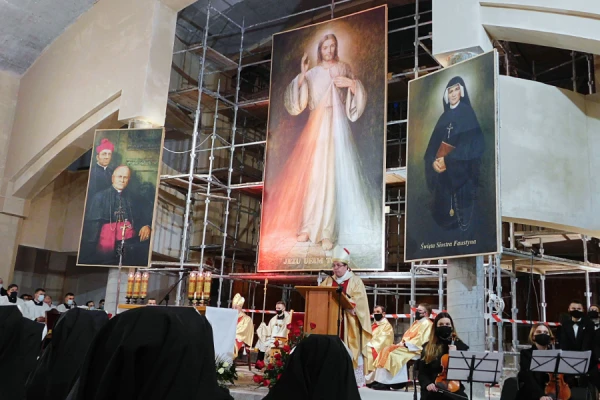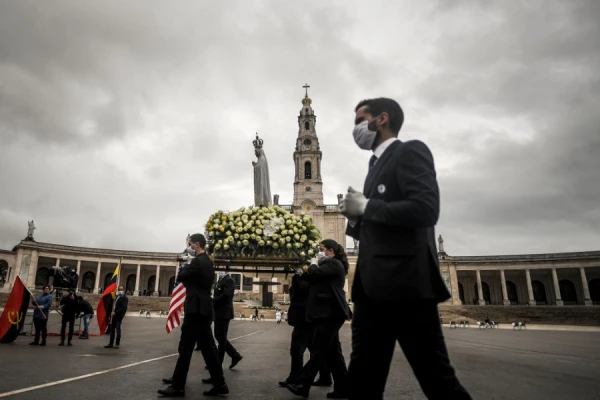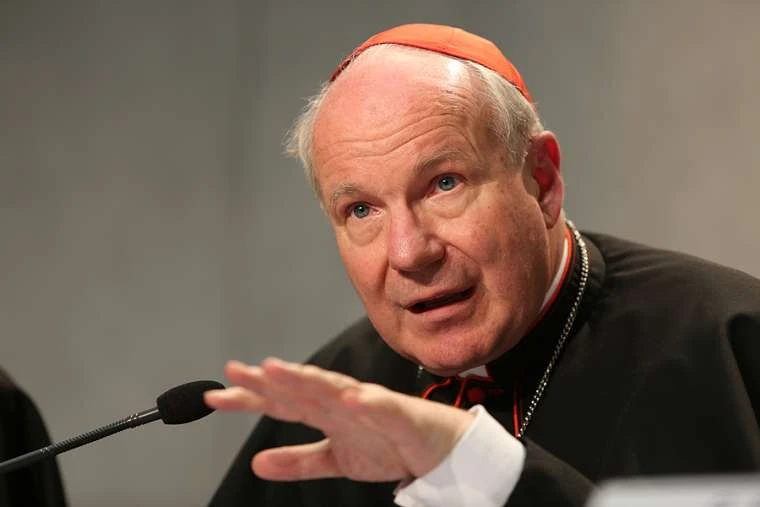
CNA Staff, Feb 23, 2021 / 04:00 am (CNA).- A Vatican archbishop celebrated the 90th anniversary of the first Divine Mercy apparition on Monday in the Polish city of Płock.
Archbishop Jan Romeo Pawłowski, an official at the Vatican Secretariat of State, celebrated Mass on Feb. 22 at the Shrine of the Divine Mercy in Płock, where St. Faustina Kowalska saw a vision of Jesus on Feb. 22, 1931.
The Polish nun said that Jesus appeared dressed in white, with rays emerging from his chest, asking her to create an image of him bearing the words “Jesus, I trust in you.”
In his homily, Pawłowski said: “Today, after 90 years, the prayer ‘Jesus, I trust in you!’ is translated into hundreds of languages, and is repeated millions of times.”
“We can dare to say that this prayer completes the Our Father prayer, also established by Jesus himself to teach his disciples how to turn to the Father, while the one taught to Sr. Faustina tells us how to turn to the Merciful Son.”
The Polish archbishop, who was appointed Secretary for the Pontifical Representations in December, said that he had discussed his visit to Płock with Pope Francis before departing the Vatican.
He said: “Before leaving to come here, I notified the Holy Father, who told me: ‘Pray for me and make people pray for me. Tell them that I deeply believe in divine mercy.’”
The pope formally marked the anniversary in a letter to Bishop Piotr Libera of Płock, where St. Faustina lived in a convent from June 1930 to November 1932.
“Let us ask Christ for the gift of mercy. Let it engulf us and penetrate us. Let us have the courage to come back to Jesus to meet His love and mercy in the sacraments,” he said in the letter, dated Feb. 15.
“Let us feel His closeness and tenderness, and then we will also be more capable of mercy, patience, forgiveness, and love.”
Pope Francis also referred to the 90th anniversary following the Angelus on Feb. 21, saying: “Today my thoughts go to the Shrine of Płock in Poland, where 90 years ago the Lord Jesus manifested Himself to St. Faustina Kowalska, entrusting a special message of divine mercy to her.”
“Through St. John Paul II this message reached the entire world, and it is none other than the Gospel of Jesus Christ, who died and rose again, and who gives us His Father’s mercy. Let us open our heart, saying with faith, ‘Jesus, I trust in You.’”
The Divine Mercy image was first painted by the Polish artist Eugeniusz Kazimirowski. After the nun’s death in 1938, other artists created images inspired by her description of the apparition. The best-known version was painted by the Polish painter Adolf Hyła in 1943.
Sr. Faustina was canonized by Pope John Paul II in the year 2000, becoming the first saint of the new millennium. In his canonization homily, the Polish pope described her life and witness “as a gift of God for our time.”
Poland’s President Andrzej Duda also sent a message marking the 90th anniversary.
He said that the message of St. Faustina, shared with the world by St. John Paul II, “has a universal dimension, reaching the hearts of people of good will, regardless of their religion and worldview.”
He continued: “And I am convinced that, especially in modern times, humanity needs the solidarity and hope that sound so strongly in the writings of both of our saints.”
If you value the news and views Catholic World Report provides, please consider donating to support our efforts. Your contribution will help us continue to make CWR available to all readers worldwide for free, without a subscription. Thank you for your generosity!
Click here for more information on donating to CWR. Click here to sign up for our newsletter.





Leave a Reply